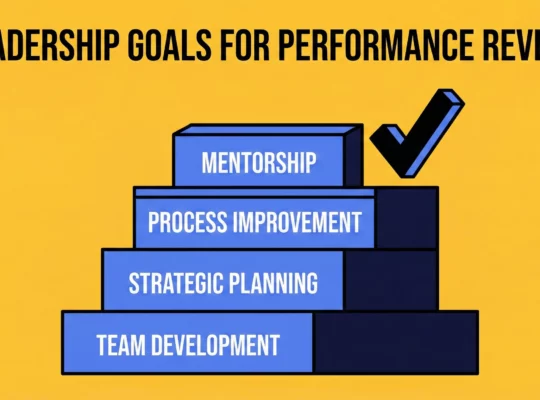Exclusion at work can be a silent killer of team morale and productivity. From subtle snubs to overt ostracism, exclusion manifests in many forms, leaving employees feeling isolated and undervalued. At Review.jobs, we understand the profound impact that workplace exclusion can have on both individuals and organizations. This article aims to shed light on what workplace exclusion entails, why it matters, and how to address it effectively. By understanding the dynamics of exclusion, companies can create a more inclusive workplace, fostering a culture where everyone feels valued and respected.
- What is Workplace Exclusion?
- The Psychological and Emotional Impact
- Signs of Exclusion in the Workplace
- Impact of Exclusion on Team Dynamics
- The Root Causes of Exclusion at Work
- Strategies to Combat Exclusion at Work
- The Long-term Benefits of Addressing Exclusion
I. What is Workplace Exclusion?
Workplace exclusion refers to the deliberate or unconscious actions that leave employees out of key activities, decisions, and social interactions. It’s not always about outright discrimination; sometimes, it’s the subtle sidelining that can be just as damaging.
- Social Exclusion: This occurs when employees are left out of social events or informal gatherings. For example, an employee might not be invited to team lunches or after-work drinks, making them feel excluded from the group.
- Professional Exclusion: This form of exclusion includes being left out of important meetings, not being included in key communications, or being bypassed for opportunities that others in similar roles receive.
- Cyberbullying: With the rise of digital communication, exclusion has found its way into the virtual space. Being left out of group emails or chats, or experiencing negative comments on social media, can make employees feel isolated and excluded.
Examples of Workplace Exclusion
Exclusion can manifest in various ways, some more obvious than others:
- Meetings: Not being invited to meetings that are relevant to your role.
- Key Communications: Being left out of important emails or updates that affect your work.
- Social Ostracism: Being ignored or excluded from casual conversations or social events.
II. The Psychological and Emotional Impact
Exclusion at work can have a profound and detrimental impact on an individual’s mental health and well-being. The constant feeling of being left out or overlooked can lead to severe psychological and emotional distress.
- Anxiety and Depression: Employees who feel excluded may experience increased levels of stress, anxiety, and depression. The constant feeling of being left out can erode their self-esteem and sense of worth.
- Decreased Job Satisfaction: Feeling excluded can lead to decreased job satisfaction. When employees feel undervalued, their engagement and commitment to the organization suffer, often leading to increased absenteeism and a desire to leave the company.
- Reduced Productivity: The emotional burden of exclusion can significantly impact an employee’s ability to perform. Distraction, lack of motivation, and low energy levels are common consequences, ultimately affecting the organization’s bottom line.
III. Signs of Exclusion in the Workplace
Exclusion isn’t always overt and can be difficult to detect. However, there are subtle indicators that managers and colleagues should be aware of:
Behavioral Changes
- Withdrawal: Excluded employees may become withdrawn, avoid social interactions, or participate less in team activities.
- Reduced Engagement: A once-active participant in meetings or discussions may suddenly go silent or avoid contributing altogether.
- Decreased Motivation: A decline in productivity, quality of work, or interest in tasks can also be a sign of exclusion.
Body Language
- Closed-Off Posture: Crossed arms, avoiding eye contact, or slouching can be indicators of feeling excluded.
- Fidgeting: Nervous habits like tapping, fidgeting, or avoiding eye contact can signal discomfort or disengagement.
Social Dynamics
- Isolation: Observe if an employee is consistently left out of social interactions or group discussions.
- Cliques or In-Groups: Pay attention to the formation of cliques or in-groups that exclude certain individuals.
Communication Patterns
- Lack of Inclusion: Excluded employees may be left out of email chains, group messages, or informal workplace chats.
- Limited Feedback: A lack of feedback, both positive and negative, can also be a sign of exclusion.
IV. Impact of Exclusion on Team Dynamics
Exclusion at work doesn’t just affect the individual; it can have a detrimental impact on the entire team. When exclusionary behaviors are present, the following negative consequences can occur:
Decreased Collaboration
- Silos within the Team: Exclusion can create divisions and cliques, hindering effective communication and cooperation.
- Reduced Information Sharing: Excluded employees may be less likely to share their ideas and knowledge, leading to missed opportunities and suboptimal decision-making.
- Lack of Teamwork: A sense of isolation and resentment can erode team spirit and collaboration, hindering the team’s ability to achieve goals.
Erosion of Trust
- Breakdown of Trust: Exclusion can undermine trust among team members, leading to a lack of confidence and cooperation.
- Negative Impact on Relationships: Damaged relationships can make it difficult to work effectively together and achieve shared goals.
- Fear and Insecurity: A culture of exclusion can create an atmosphere of fear and insecurity, where employees are hesitant to speak up or take risks.
Low Morale
- Negative Work Environment: Exclusion can create a toxic work environment that negatively impacts employee morale and well-being.
- Decreased Engagement: Excluded employees may become disengaged and less motivated to contribute to the team’s success.
- Increased Turnover: A negative work environment can lead to higher turnover rates, making it difficult to retain top talent.
V. The Root Causes of Exclusion at Work
Understanding the root causes of exclusion is essential for addressing it effectively. Exclusion can stem from various sources, including:
Biases and Discrimination
- Unconscious Biases: Often, exclusion is driven by unconscious biases that people may not even be aware of. These biases can be based on gender, race, age, disability, or other factors, leading to discriminatory practices that exclude certain employees.
- Stereotypes: Stereotypes can perpetuate exclusion by creating preconceived notions about an individual’s capabilities or suitability for certain roles. This can result in them being overlooked or excluded from key opportunities.
Cultural and Organizational Factors
- Organizational Culture: The culture of an organization plays a significant role in promoting or preventing exclusion. A company culture that values diversity and inclusion will be more likely to identify and address exclusionary behaviors.
- Leadership Styles: Leadership styles that are authoritarian or hierarchical can contribute to exclusion. When leaders do not encourage open communication or fail to involve all employees in decision-making, exclusion can become systemic.
Power Dynamics
- Imbalance of Power: Exclusion often occurs when there is an imbalance of power within a team or organization. Those in positions of power may consciously or unconsciously exclude those they perceive as less influential, creating a hostile work environment.
VI. Strategies to Combat Exclusion at Work
Addressing exclusion at work requires a multifaceted approach that involves both organizational and individual efforts. Here are some strategies to combat exclusion:
Promoting Inclusivity and Diversity
- Diversity and Inclusion Training: Implementing training programs that focus on diversity and inclusion can raise awareness of unconscious biases and reduce exclusionary behaviors.
- Employee Resource Groups: Encourage the formation of employee resource groups (ERGs) that provide support and advocacy for underrepresented employees. These groups can play a vital role in creating a more inclusive workplace culture.
Creating a Supportive Environment
Open Communication
Fostering a culture of open communication is crucial. Employees should feel comfortable sharing their experiences of exclusion without fear of retaliation. Review.jobs offers platforms that facilitate employee reviews, providing a safe space for employees to voice their concerns and experiences.
Review.jobs: A Catalyst for Inclusion
Review.jobs offers a powerful platform for companies to gather, manage, analyze, and showcase employee feedback. By fostering a culture of open communication and transparency, Review.jobs can help combat exclusion and create a more inclusive workplace.
Key Benefits:
- Unfiltered Feedback: Gathers honest employee perspectives on workplace culture, fostering a sense of belonging.
- Data-Driven Insights: Provides valuable data to identify areas of exclusion and address them proactively.
- Employee Advocacy: Empowers employees to share their experiences, building a positive employer brand and attracting diverse talent.
Anti-Discrimination and Anti-Bullying Policies
Establishing clear policies that address discrimination, harassment, and bullying is essential. These policies should outline the consequences of exclusionary behaviors and provide a framework for addressing complaints.
Leadership’s Role in Preventing Exclusion
Leaders play a pivotal role in creating an inclusive and welcoming work environment. By actively promoting diversity, equity, and inclusion, leaders can prevent exclusion and foster a sense of belonging among all team members.
Inclusive Leadership
- Seek Input from All: Encourage all employees to share their ideas, perspectives, and concerns. This demonstrates a commitment to inclusivity and empowers employees to feel valued.
- Value Diverse Perspectives: Recognize the importance of diverse viewpoints and actively seek out individuals from different backgrounds and experiences.
- Ensure Equal Opportunity: Create a fair and equitable workplace where everyone has an equal opportunity to succeed, regardless of their background.
Mentorship and Sponsorship
Mentorship and sponsorship programs can provide underrepresented employees with the support and guidance they need to thrive in the workplace.
- Mentorship: Mentors can offer guidance, advice, and support to mentees, helping them navigate their careers and overcome challenges.
- Sponsorship: Sponsors actively advocate for mentees, promoting their visibility and supporting their career advancement.
Practical Steps for Employees
While leadership plays a crucial role in preventing exclusion, employees also have a responsibility to contribute to a more inclusive work environment.
Speak Up
- Voice Your Concerns: If you feel excluded, don’t hesitate to speak up to your manager, HR representative, or a trusted colleague. Addressing the issue early on can help prevent it from escalating.
- Seek Support: If you’re uncomfortable speaking up directly, seek support from a mentor, colleague, or employee assistance program (EAP).
Support Colleagues
- Stand Up for Others: If you witness exclusionary behavior, offer your support to the affected individual and speak out against it.
- Create a Culture of Inclusion: Encourage your colleagues to be inclusive and respectful of others.
Foster Inclusion
- Active Participation: Engage in team activities, meetings, and social events to create a sense of belonging.
- Inclusive Language: Use inclusive language and avoid making assumptions based on stereotypes.
- Seek Diverse Perspectives: Actively seek out and value the perspectives of others, especially those from different backgrounds.
VII. The Long-term Benefits of Addressing Exclusion
When exclusion is effectively addressed, the benefits extend far beyond the individual:
- Improved Employee Well-being: Employees who feel included are more likely to be engaged, satisfied, and loyal to the organization. This leads to reduced absenteeism and turnover, which positively impacts the organization’s overall performance.
- Enhanced Productivity: A workplace that values diversity and inclusion is more likely to foster creativity and innovation. When employees feel valued and included, they are more likely to contribute their best ideas and efforts.
- Stronger Organizational Culture: Addressing exclusion helps build a stronger, more cohesive organizational culture. A culture of inclusion attracts top talent, enhances the company’s reputation, and contributes to long-term success.
At Review.jobs, we believe fostering an inclusive workplace isn’t just a moral imperative, it’s a strategic investment. By harnessing employee feedback through our platform, you can identify and address exclusion, ultimately attracting top talent, boosting employee morale, and driving organizational success. Take control of your employer brand – start building a more inclusive workplace today.





